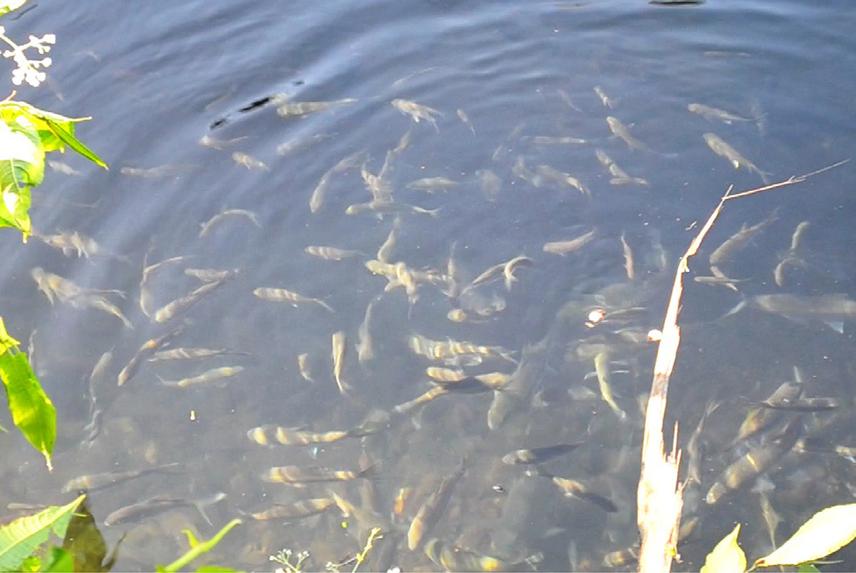Boni Amin Laskar
Other projects
31 Oct 2013
Threat Identification and Population Assessment of Neolissochilus hexastichus - An Endemic Mahseer Fish in North-East India Vis-à-Vis Conservation Actions
The focussed fish species is dwindling in nature. There is need of evaluation of population status, and strengthening of efforts for its in-situ conservation. So, this project aims to determine essential habitat criteria of life stages of the species, based on which suitable habitats would be mapped. The determined habitat sites would be claimed for restocking of the fish, habitat restoration and protection. Conservation campaign would be extended to mass people who have been involved in Mahseer fish killing.

Congregation of different life stages of chocolate mahseer in Mehao Lake
Jungha Mahseer or Tor progeneius (McClelland, 1839) is one of the endemic Mahseer fishes in India, distributed in Assam, Arunachal Pradesh and Nagaland; categorized as one of the 63 threatened fishes in India. The species is dramatically declining in nature, in the prevailing situation, only redeeming effort needed to be taken up early before the species comes into the verge of extinction could be wide dispersion of the species through ranching and restocking in safe ecosystem. Therefore, the understanding of habitat preferences of the species in different geographical population is essential to formulate species as well as location specific strategies for conservation. Together, mapping of like habitats in safe environment is the urgently needed for long term conservation through ranching and restocking.
This research proposal is conceived because (a) there is no report on the fundamental niche for the species, (b) the life history strategy of the selected species is very little known, (c) the recently held IUCN convention at Kolkata, recommended for the status evaluation and conservation of the proposed species in northeast India, and (b) awareness to people for management and conservation of fish diversity is must in northeast India as many anthropogenic affects like destructive fishing techniques of using fish poison; electric fishing and over-fishing are prevail in the region and have greatly been jeopardizing the fishery status.
So, this proposal is intended to evaluate the population of the species, determine essential habitat criteria of life stages of the species and to provoke peoples’ participation in conservation.
The project area includes the parts of Eastern Himalaya- the Arunachal Pradesh, the states Assam and Nagaland. The river Brahmaputra is the principal river in the region. The study sites mainly include the rivers in the foothill to temperate zone which is basically called a Mahseer water zone.
The habitat inventory survey would lead to recognize and rank the sturdy habitats of the proposed species; which may be recommended for management and declaration of conservation site; the information on the relationship of life history with habitat would be generated for establishing habitat suitability index (HSI).
India, one of the many countries of the world, earns considerable foreign exchange through tourism including fishing. Mahseer, among the carps of India, give good sport. So, in the light of economic welfare to local inhabitants, the success of the theme of the project “Mahseer conservation and propagation” may lead in future the development of angling-tourism industry: an alternative livelihood for poor/marginal fishermen in the region.